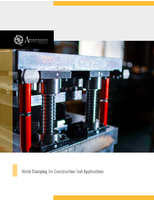Furniture Fixings That Meet Required Torque Standards

Using torque destruction testing for critical fastenings is usually associated with the automotive industry, however determining the correct screw for the application can also be found in other industries such in high volume furniture manufacturing. One leading flatpack furniture manufacturer uses this method in its R&D department to specify the correct wood screws.
In order to ensure that the fixings they provide are of the correct quality and strength, the furniture manufacturer rigorously tests with electronic torque tools supplied by Crane Electronics.
The testing process can be divided into two elements - the human and the material component.
The human component is to establish how much torque the consumer is likely to apply when assembling the furniture. The typical assembly instruction specifies the use of screwdrivers or a supplied Allen key. Once this torque range is established, it can be used for the material testing.
The application testing varies depending on the wood grade and screw material. Fastening with Allen keys is tested with Crane Electronics' 10Nm rotary transducer and TorqueStar Opta readout. The effect of DIY power tools, such as cordless drills, is also tested with a 50 Nm rotary transducer. In addition, tightening with a manual screwdriver is performed with a DTS ScrewMaster, a digital screwdriver with display, covering a torque range of 0.5 - 5Nm.
The tests identify when the screws and bolts break. Any failures result in the type of screws being removed from the supply chain. However, if a screw is over specified it can also be removed as this will prevent any unnecessary costs being passed on to the customer. Considering the volumes in which flatpack furniture is produced, it is self-explanatory how important such cost savings can be.
Setting up the test and recording the data is user friendly. Testing routines can be set up on a PC and uploaded to Crane's torque readouts. After the material testing, the torque data can be downloaded back to the PC for further statistical analysis and record keeping. The readout unit can also record multiple torque traces which can then be overlaid for comparison. During testing it is also possible to view the last torque graph on the TorqueStar Opta itself.
For more information about the TorqueStar Opta and UTA inline rotary transducers, call Crane Electronics on 309 787 1263, e-mail jerry@crane-electronics.com or visit the website at www.crane-electronics.com
Jerry Keel
Crane Electronics Inc
1260 11th Street
Milan, Illinois 61264
United States
Tel: 309 787 1263
Fax: 309 787 2099
jerry@torque-2-crane.com
Robert Drury
Taylor Alden Limited
8 West Mills Yard
Newbury
RG14 5LP
Tel: +44 1635 521 103
Fax: +44 1635 521098
mailbox@tayloraldenpr.com




